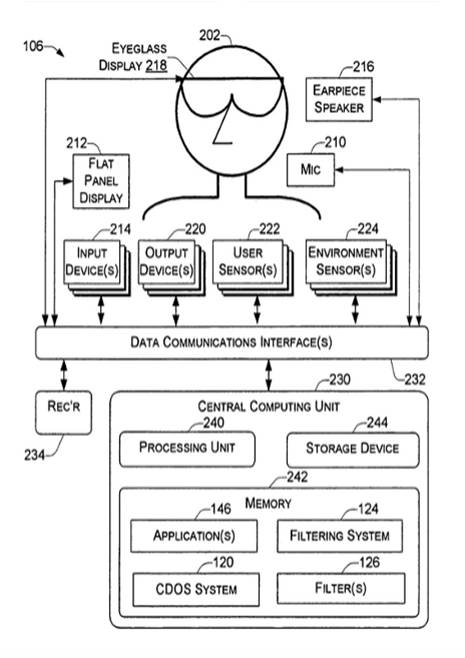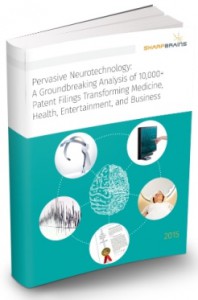
Today we highlight a fascinating 2008 patent assigned to Microsoft, discussing assessment techniques such as pupil tracking or head orientation sensors to identify where and what the user is focused on–and what types of information and/ or notifications to display accordingly.
U.S. Patent No. 7,395,507: Automated selection of appropriate information based on a computer user’s context.
- Assignee(s): Microsoft Corporation
- Inventor(s): James O. Robarts, Dan Newell, Kenneth H. Abbott
- Technology Category: Neuro-monitoring
- Issue Date: July 1, 2008
SharpBrains’ Take:
The ‘507 patent discloses methods for assessing a user’s mental state and more broadly the user’s context, to discern whether or not to present the users with a message (e.g., an advertisement). The specification describes techniques for assessing mental states such as a user’s likely intentions, preferences and level/ quality of attention. These assessment techniques include pupil tracking sensors or head orientation sensors to identify where and what the user is focused on. Considering the user context (i.e., the mental state), the system will (or will not) present the advertisement. Hence, the ‘507 patent is more of a snapshot of the user’s current mental state for information management rather than a diagnostic assessment of longer-term neurological or psychological state characterizing other brain health assessment patents. The nearly 100 forward citations and broadly claimed inventive concept are among the factors making the ‘507 patent a key non-invasive neurotechnology patent.
Abstract:
A system filters received messages (e.g., unsolicited advertisements) to determine if they are appropriate for a user based on the non-static, constantly evolving, context of the user. The system can track the user’s context by monitoring various environmental parameters, such as related to the user’s physical, mental, computing and data environments, and can model the current context of the user based at least in part on the monitoring. The system selects a set of one or more filters to apply to incoming messages based on the user’s context, and the selected filters can be updated as the user’s context changes. Messages that survive the filters are then evaluated against the user’s context to determine whether they should be presented immediately or stored for delayed presentation.
Illustrative Claim 19. One or more computer-readable media storing computer-executable instructions that, when executed, direct a computer to:
- ascertain a user’s context from data representative of various conditions of the user’s environment;
- select a subset of a set of multiple filters based on the user’s current context, the filters specifying inter-filter information that facilitates determining a compatibility between two or more filters; and
- filter unsolicited messages based at least on the user’s context and a composite of the selected subset of multiple filters.
 To learn more about market data, trends and leading companies in the digital brain health space –digital platforms for brain/ cognitive assessment, monitoring and enhancement– check out this market report. To learn more about our analysis of 10,000+ patent filings, check out this IP & innovation neurotech report.
To learn more about market data, trends and leading companies in the digital brain health space –digital platforms for brain/ cognitive assessment, monitoring and enhancement– check out this market report. To learn more about our analysis of 10,000+ patent filings, check out this IP & innovation neurotech report.
The post Tailoring computing experience based on user’s mental state and quality of attention: Key neurotechnology patent #30 appeared first on SharpBrains.